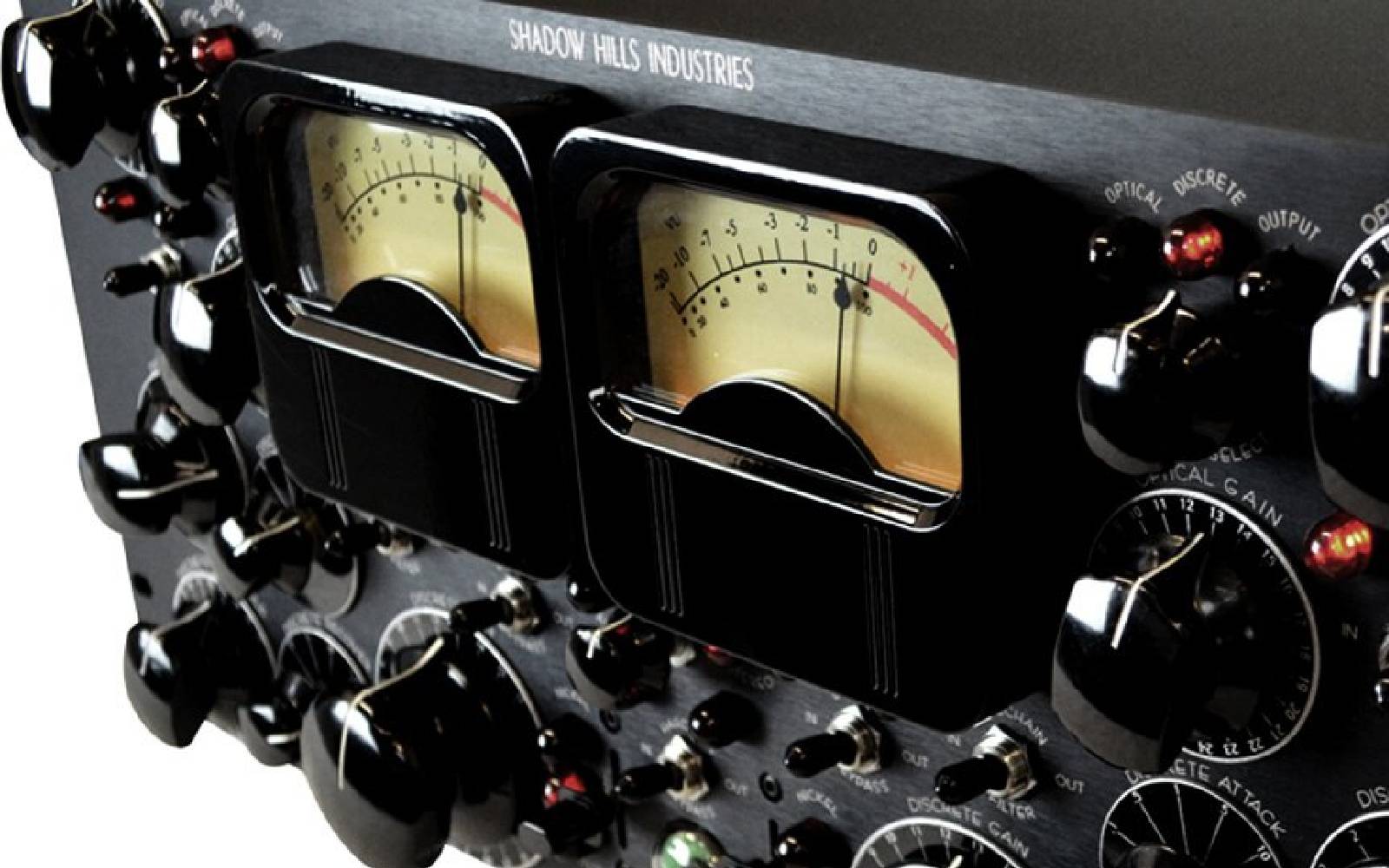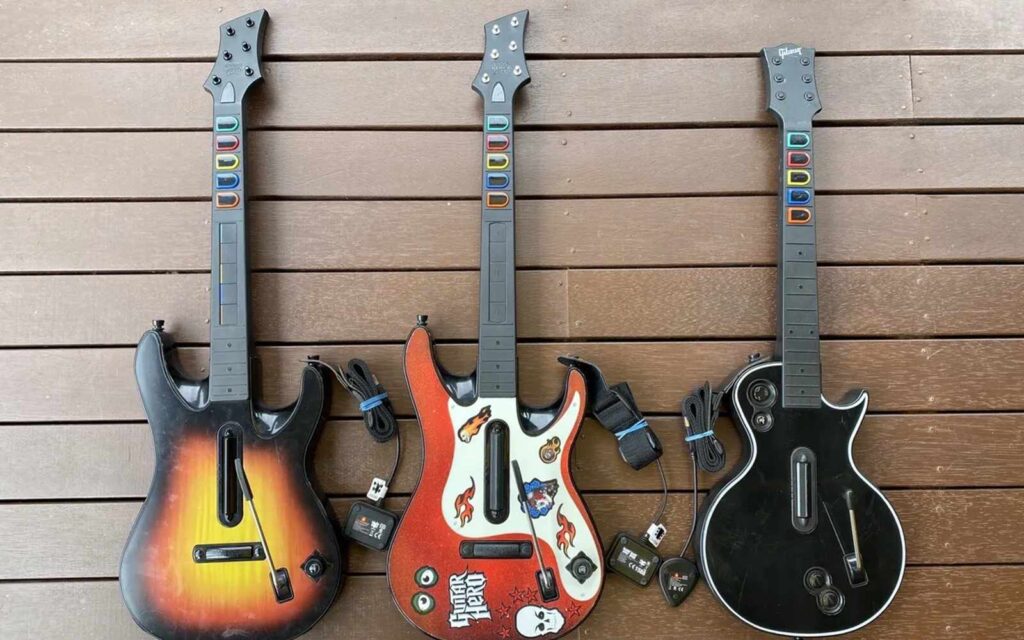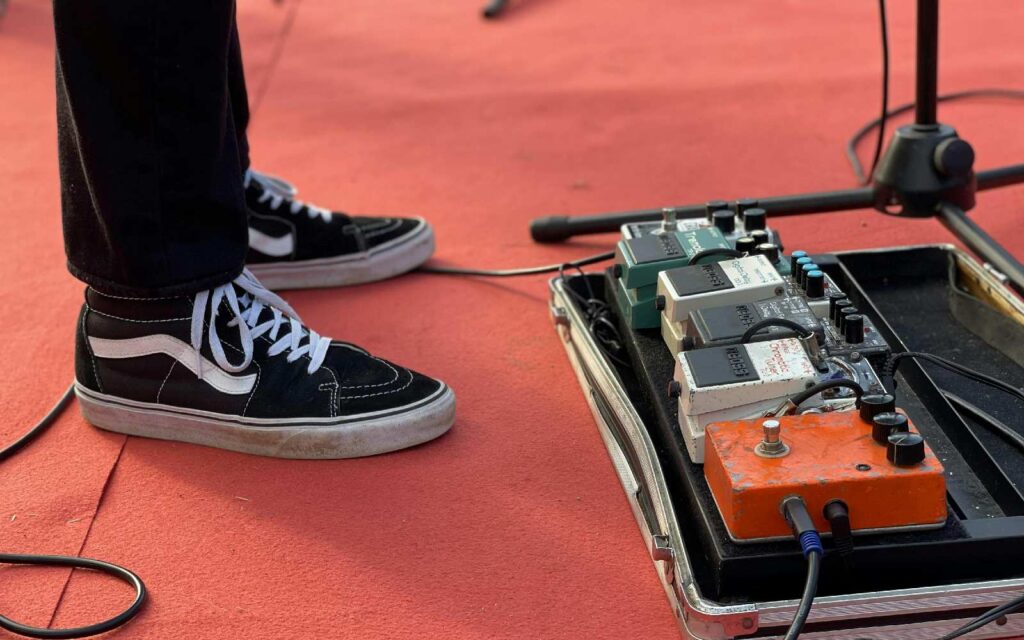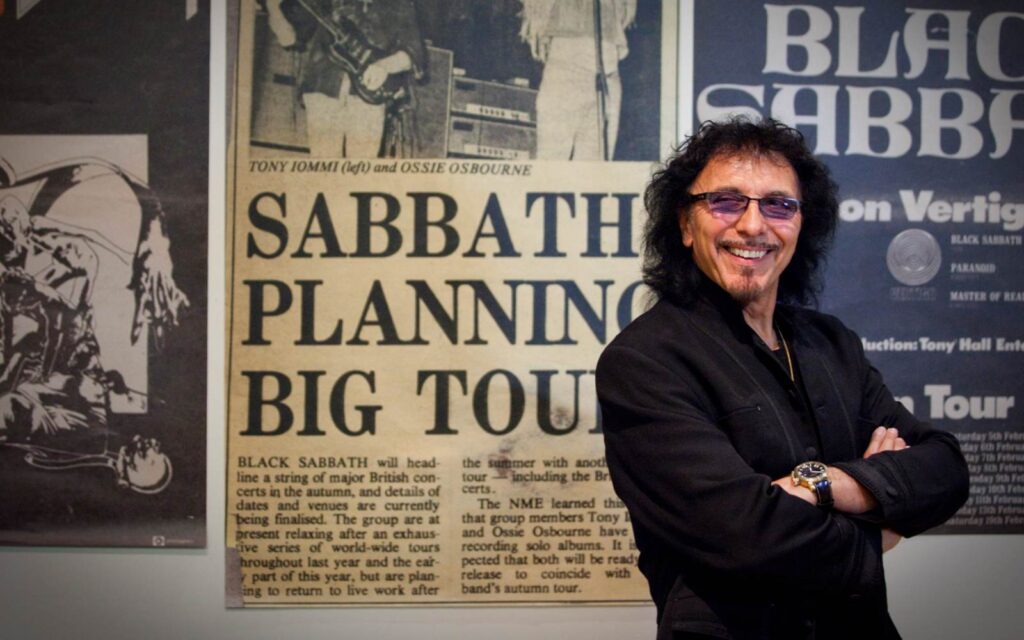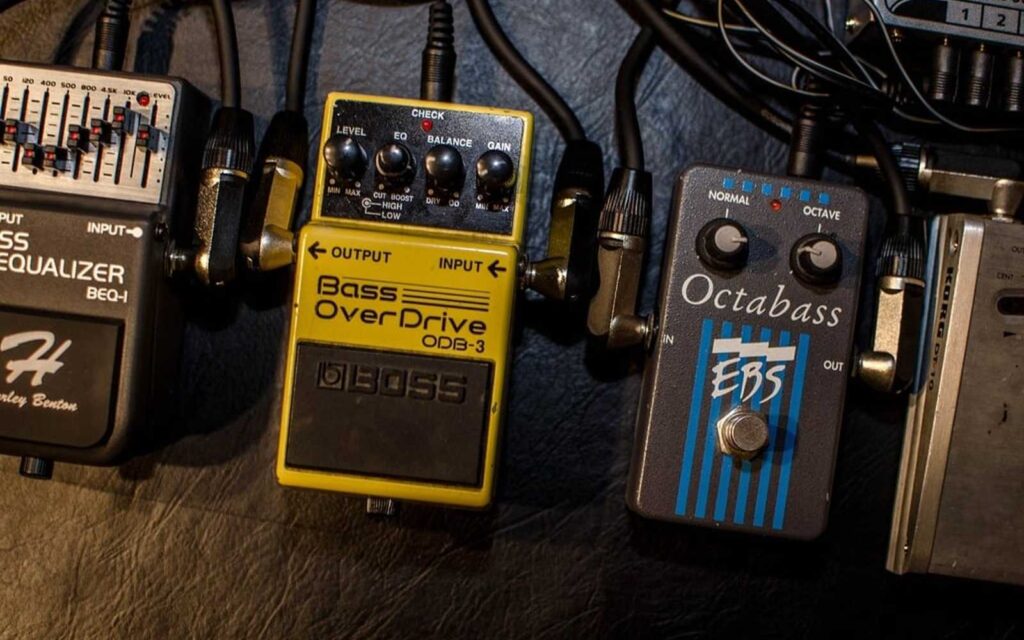Their website is just an image of their WWII-inspired logo above an email and phone number; they’ve only posted twice on Instagram.
Shadow Hills by name, shadowy by nature, the boutique audio company founded by enigmatic engineer and erstwhile punk Peter Reardon produces some of the finest (and heaviest) outboard gear money can buy – if you know where to find it.
Their website is just an image of their WWII-inspired logo above an email and phone number; they’ve only posted twice on Instagram. Reardon rarely gives interviews. Shadow Hills has always eschewed traditional advertising, instead relying on word-of-mouth for sales; a brave strategy, banking on the product being good enough that people will tell their friends about it. But for a company building such remarkable hardware, this has never been a problem.
Shadow Hills Industries
Peter Reardon found his way into the recording industry in the 80s through a recording course at Houston Community College, dropping out of high school to take advantage of the free studio time to record his punk band. Later, he engineered and produced for Houston’s Rap-A-Lot and Waxploitation labels.
Whilst working in studios, he developed a knack for repairing equipment,eventually turning that talent to building custom outboard gear to mess about with. The trouble was, whenever he brought something into the studio, other engineers would fall in love with it and insist he leave it behind; so, he’d have to build more. He took to foraging in army surplus stores for vintage test equipment that he could harvest for parts, and unwittingly stumbled across the enduring sonic and visual aesthetic for all future Shadow Hills products in these bomb-proof Cold War-era units.
Shadow Hills Mastering Compressor
As an example of this aesthetic, look no further than the pride of the Shadow Hills arsenal. It’s been described as like something out of the cockpit of a B-52 bomber, and weighing over 15kg with a 5U footprint, it’d probably do a fair bit of damage if you were to drop one out of a plane.
This size and weight are justified when you consider that it contains four compressors and six output transformers – an opto and VCA in series for each of the two channels, plus three switchable transformers on each side – and that every component is discrete, with no integrated circuits or software modelling.
The control panel is, at first glance, kind of terrifying – an impenetrable forest of black Bakelite knobs and switches, haphazardly encircling dual VU meters and the glowing green Magic Eye. The best way to approach it is by splitting it in half; the left-hand side controls both channels when in stereo mode, whilst the right-hand side is its mirror image, only becoming active for dual mono mode.
Two knobs – Opto Threshold and Opto Gain – pertain to the opto compressor, which can be likened to a modified LA-2A. It contains the same T4 optical attenuator as its electroluminescent ancestor, albeit optimised for mastering – the dual stage release is a little faster, with 80% of the recovery time happening very quickly and the final 20% taking up to a second. This makes it great for smoothing out the dynamic range of the material in a natural, musical way.
Below the Opto section is the Discrete compressor, a VCA-based circuit which allows control over the attack and release times for finer shaping of the dynamics. In addition to threshold and gain, there’s a Ratio control with settings as mellow as 1.2:1 right through to Flood, a 20:1 almost-limiter. The Attack and Release settings are actually quite similar in range to the famous SSL G Bus Compressor, including a Dual release mode which mimics the two-stage release of an opto compressor.
One of Shadow Hills’ trademark features is the ability to switch between multiple “flavours” – Nickel, Iron and Steel, named for the material used in winding the coils in each. Nickel is the cleanest option, with low harmonic distortion and very little colouring. Iron is slightly more coloured, with a 1dB bump at 100Hz and a bit more harmonic content; it’s based around the St Ives 1166 Neve transformer, commonly dubbed British Iron. Steel is the most coloured, and the most “dirty”, with a 1dB bump around 40Hz. As the manual states, the differences can be reasonably subtle depending on how hard you hit the transformer, and are pretty dependent on the frequency content of your program material. In keeping with the old-school military bit, the manual also contains incredibly detailed instructions on how to destroy the unit to prevent it from falling into enemy hands should you be captured – a process which involves snipping, crushing, incinerating, and grenades.
Shadow Hills have release a couple of compressor modules directly descended from the Mastering Compressor.
The Mono Optograph is essentially the opto section of the SHMC coupled with the “iron” transformer, crammed into a double-wide 500 series module. The sidechain filter has additional frequency points (90, 150, 250 Hz and Band Pass), and the “Desaturate” setting cancels out the harmonic distortion introduced by the transformer for a cleaner sound.
The Dual Vandergraph is a stereo VCA compressor based on the “Discrete” comp in the SHMC. It shares the same output transformer and filter matrix as its Optograph sibling, as well as the 500 series format. Its ratios aren’t too dissimilar to those found on the SHMC, but uniquely, each ratio has its own set of time constants. The gentle 1.2:1 ratio has a slow attack of 30ms and a medium release of 100ms, perfect for gentle compression without affecting the transient. The 2.5:1 ratio has constants of 30/500ms, similary allowing transients through but providing a bit more hold over the release time. The 4:1 ratio has a quicker attack of 10ms but the same release, while the 8:1 ratio has limiter-like settings of 0.5ms attack and 250ms release.
Mic preamps
The Golden Age Mic Amp (GAMA) combines the cusom-built Shadow Hills Discrete Op-amp with the famed transformer matrix from their other hardware units. The GAMA lacks the “iron” transformer, with the nickel and steel transformers accompanied by a “discrete” setting which bypasses the transformer altogether for a super clean sound.
A pair of GAMA preamps are included in the Equinox, which is essentially a small-format recording console squeezed into a 2U enclosure. It can be used as a stereo preamp for recording, or as a summing mixer, with 30 channels feeding the two preamps. This allows you to impart the analogue colour of any of the three transformer types to tracks coming out of your DAW. In addition, a monitor section allows you to switch between three stereo outputs and four input sources.
Digital Emulation
Shadow Hills Industries are undoubtedly building processors of incredible quality, but the price point had always put them well out of reach of the average producer or musician – until the release of the Shadow Hills Mastering Compressor plugin. Developed in collaboration with German outfit Brainworx, widely regarded as the gold standard for hardware emulation, the entire circuit was painstakingly “built” in code. Reardon was involved every step of the way, testing each feature of the plugin as it became functional, with the end goal of producing an emulation that was identical in function and sound to the hardware, so that any engineer who’d worked with a real unit would be able to use the software the exact same way.
This has had the effect of democratising the hitherto-unattainable sound of Shadow Hills, expanding the reach of the brand and putting exceptional quality into the hands of a generation of new engineers, imbuing countless hits with a dash of 1940s military-grade analogue goodness.
Check out Shadow Hills aforementioned minimal website here.
